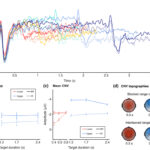Since the classical internal clock model, the timing theory is characterized by the scalar property. This property refers to time estimation following Weber’s law, which stemmed in part from Gibbon’s work (1977). Many recently developed neurobiological plausible models emphasize the realization of the scalar properties, while virtually ignoring the computational accessibility. Studies have shown that humans and other animals can estimate timing based on arithmetic calculations. In this theoretical paper, Shi and colleagues (2022) propose a multifrequency oscillatory model that offers computational accessibility, which could account for both retrospective and prospective timing.
We dedicate this paper to Prof. Warren H. Meck. The model we propose here, which was first developed before Warren left us, attempts to unify the retrospective and prospective timing.
References
Gibbon, J. (1977). Scalar expectancy theory and Weber’s law in animal timing. Psychological Review, 84(3), 279–325. https://doi.org/10.1037/0033-295x.84.3.279
Shi, Z., Gu, B. M., Glasauer, S., & Meck, W. H. (2022). Beyond scalar timing theory: integrating neural oscillators with computational accessibility in memory. Timing & Time Perception. https://brill.com/view/journals/time/aop/article-10.1163-22134468-bja10059/article-10.1163-22134468-bja10059.xml




